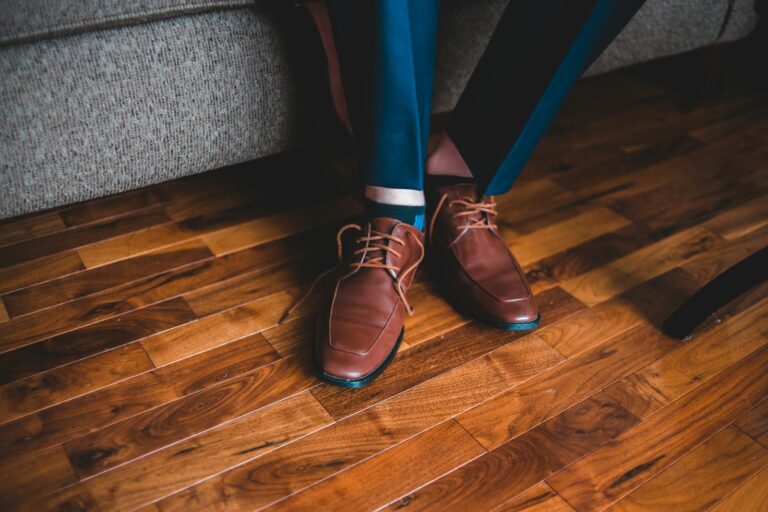Hardwood floors are a beautiful and timeless addition to any home. They add warmth, elegance, and value. However, these floors are susceptible to scratches, which can diminish their beauty and longevity.
Taking preventative measures is crucial for maintaining the pristine look of your hardwood floors. This comprehensive guide will equip you with the knowledge and strategies to protect your investment and enjoy their beauty for years to come.
Understanding the Culprits
Scratches on hardwood floors can be caused by various factors. Understanding these culprits is the first step toward prevention. Here are some of the most common causes:
- Foot Traffic: The constant movement of furniture, people, and pets can cause scratches over time. High-heeled shoes, sharp furniture legs, and pet claws can inflict significant damage.
- Furniture: Furniture can be a major source of scratches if it’s not properly protected. Heavy furniture can cause indentations or scratches if it’s dragged across the floor.
- Sand and Grit: Sand and grit brought in from the outside can be abrasive and cause scratches when they get tracked across the floor.
- Pets: Pets can be a significant source of scratches, especially if they have sharp claws.
- Improper Cleaning: Using harsh cleaning products or abrasive cleaning tools can damage the finish on your hardwood floors, leading to scratches.
Pre-emptive Measures
Preventing scratches requires proactive measures to safeguard your hardwood floors. Here are some effective preventative strategies:
- Use Protective Floor Mats: Placing floor mats in high-traffic areas can help absorb some of the impact from shoes and furniture. Choose mats made of soft, non-abrasive materials like rubber or felt.
- Furniture Protection: Equip your furniture with protective pads or glides. Felt pads are excellent for protecting floors from scratches and reducing friction. Make sure to replace worn-out pads regularly.
- Use Floor Protectors: Floor protectors, such as protective coverings for furniture legs, are specifically designed to prevent scratches.
- Regular Cleaning: Sweep or vacuum your floors regularly to remove dirt, dust, and grit that can cause scratches. Use a soft-bristled broom or vacuum with a brush attachment.
- Doormats: Place doormats both inside and outside your home to trap dirt, grit, and sand before they reach your hardwood floors.
Maintenance and Refinishing
Regular maintenance and occasional refinishing can help to prevent and repair scratches, extending the life of your hardwood floors. Here’s a guide:
- Clean Regularly: Clean your hardwood floors regularly with a wood floor cleaner specifically formulated for your type of finish. Avoid using harsh chemicals or abrasive cleaners.
- Avoid Excessive Moisture: Excess moisture can damage your hardwood floors, leading to warping and scratches. Wipe up spills immediately and avoid using excessive water when cleaning.
- Refinish When Needed: Over time, your hardwood floor finish can wear down, making it more susceptible to scratches. Refinishing involves sanding down the existing finish and applying a new one, restoring the floor to its original beauty.
Conclusion
Protecting your hardwood floors from scratches requires a multifaceted approach. By understanding the causes, implementing preventative measures, and maintaining your floors regularly, you can preserve their pristine look and longevity.
Remember that prevention is key. By proactively addressing potential scratch culprits, you can keep your hardwood floors looking their best for years to come.
Enjoy the beauty and elegance of your hardwood floors with peace of mind knowing you’ve taken the necessary steps to safeguard them.
Frequently Asked Questions
1. What are some specific types of floor mats that are best for protecting hardwood floors?
While any soft, non-abrasive mat will help, rubber mats with a textured surface offer excellent traction and prevent slipping, making them ideal for high-traffic areas. Felt mats are great for protecting floors from furniture scratches, but they may not be as effective for capturing dirt and grit.
2. How often should I replace furniture pads?
It’s best to replace worn-out furniture pads every few months, or more frequently if you notice any signs of wear and tear. This will ensure they are providing adequate protection and prevent scratches from occurring.
3. What is the best way to clean hardwood floors without damaging the finish?
Use a wood floor cleaner specifically formulated for your type of finish. Avoid using harsh chemicals, abrasive cleaners, or excessive water, as these can damage the finish and make your floor more susceptible to scratches.
4. How often should I refinish my hardwood floors?
The frequency of refinishing depends on the amount of traffic and wear and tear your floors experience. Most floors will need refinishing every 5-10 years. Signs that your floors may need refinishing include dullness, scratches, or a worn finish.
5. Can I use a steam mop on hardwood floors?
Steam mops can be used on sealed hardwood floors, but it’s important to use a low-temperature setting and avoid using excessive steam. Always check the manufacturer’s recommendations for your specific floor type and steam mop model.


